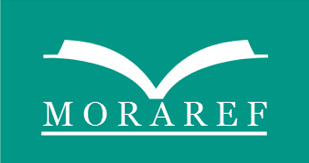Wireless Fidelity Network Security Threats (Wi-Fi)
DOI:
https://doi.org/10.34125/jerit.v2i2.26Keywords:
Nethercap, Wi-Fi, Network Security, MitM, WPA3, Encryption, Cyber AttacksAbstract
The advancement of wireless network technology has improved communication efficiency but also increased the risk of data security breaches. One significant threat to Wi-Fi networks is the use of tools like Nethercap to conduct Man-in-the-Middle (MitM) attacks. This study aims to explore in depth how Nethercap is used to steal Wi-Fi credentials, evaluate its impact on information security, and propose mitigation strategies. However, the convenience and flexibility offered by WiFi does not come without risks. Due to its radio wave-based nature and wide signal spread, WiFi networks are vulnerable to various security threats. In many cases, users or network administrators often neglect security aspects or are unaware of loopholes that could be exploited by malicious parties. As a result, sensitive information can be leaked, illegal access to the network can be gained, or even malicious activities can be carried out through a compromised network. Therefore, it is very important for anyone who manages or uses a WiFi network to understand the types of threats that may occur and implement appropriate solutions to maintain network security. The research method employed is descriptive qualitative with a case study approach. The analysis results show that Nethercap exploits vulnerabilities in wireless protocols, potentially leading to data theft, privacy violations, and organizational losses. Mitigation strategies include the implementation of WPA3, network segmentation, deployment of SIEM systems, and enhanced cybersecurity awareness.
Downloads
References
Andress, J. (2019). The Basics of Information Security: Understanding the Fundamentals of InfoSec in Theory and Practice (3rd ed.). Elsevier.
Amrulloh, N. M. A. G. (2024). Educator Recruitment Management in Improving Student Quality at Dwiwarna Parung High School. JERIT: Journal of Educational Research and Innovation Technology, 1(2), 80–90. https://doi.org/10.34125/jerit.v1i2.9
Amir, A., Afnita, A., Zuve, F. O., & Erlianti, G. (2024). Education and Application of Digital Media in Creation and Documentation Artery Based Service Letter. JERIT: Journal of Educational Research and Innovation Technology, 1(1), 36–42. https://doi.org/10.34125/jerit.v1i1.5
Adeoye, M. A., & Otemuyiwa, B. I. (2024). Navigating the Future: Strategies of EdTech Companies in Driving Educational Transformation. JERIT: Journal of Educational Research and Innovation Technology, 1(1), 43–50. https://doi.org/10.34125/jerit.v1i1.10
Arifianto, A., & Purnomo, M. S. (2024). The Role of Marketing Management in The Development of Islamic Education Services. JERIT: Journal of Educational Research and Innovation Technology, 1(2), 112–122. https://doi.org/10.34125/jerit.v1i2.14
Adeoye, M. A., Obi, S. N., Sulaimon, J. T., & Yusuf, J. (2025). Navigating the Digital Era: AI’s Influence on Educational Quality Management. JERIT: Journal of Educational Research and Innovation Technology, 2(1), 14–27. https://doi.org/10.34125/jerit.v2i1.18
Anwar, C., Septiani, D., & Riva’i, F. A. (2024). Implementation Of Curriculum Management Of Tahfidz Al-Qur’an at Al-Qur’an Islamiyah Bandung Elementary School. INJIES: Journal of Islamic Education Studies, 1(2), 91–96. https://doi.org/10.34125/injies.v1i2.11
Ayuba, J. O., Abdulkadir, S., & Mohammed, A. A. (2025). Integration of Digital Tools for Teaching and Learning of Islamic Studies Among Senior Secondary Schools in Ilorin Metropolis, Nigeria. INJIES: Journal of Islamic Education Studies, 2(1), 1–9. https://doi.org/10.34125/injies.v2i1.16
Ayuba, J. O., Abdullateef, L. A., & Mutathahirin, M. (2025). Assessing the Utilization of Information and Communication Technology (ICT) Tools for Teaching Secondary Schools Islamic Studies in Ilorin, Nigeria. JERIT: Journal of Educational Research and Innovation Technology, 2(1), 28–37. https://doi.org/10.34125/jerit.v2i1.22
Alwaan, A. Z., & T, N. A. (2024). Dakwah Strategy in The Modern Era. INJIES: Journal of Islamic Education Studies, 1(1), 28–34. https://doi.org/10.34125/injies.v1i1.4
Aziz, M., ‘Arif, M., Alwi, M. F., & Nugraha, M. N. (2024). Improving The Quality of Education Through Optimizing the Educational Administration System at The An-Nur Islamic Education Foundation. INJIES: Journal of Islamic Education Studies, 1(1), 5–15. https://doi.org/10.34125/injies.v1i1.2
Abiyusuf, I., Hafizi, M., Pakhrurrozi, P., Saputra, W., & Hermanto, E. (2024). Critical Analysis of The Rejection of Richard Bell’s Thoughts on The Translation of The Qur’an in The Context of Orientalism. INJIES: Journal of Islamic Education Studies, 1(2), 48–60. https://doi.org/10.34125/injies.v1i2.6
Baroud, N., Alouzi, K., Elfzzani, Z., Ayad, N., & Albshkar, H. (2024). Educators’ Perspectives on Using (AI) As A Content Creation Tool in Libyan Higher Education: A Case Study of The University of Zawia. JERIT: Journal of Educational Research and Innovation Technology, 1(2), 61–70. https://doi.org/10.34125/jerit.v1i2.12
Bejtlich, R. (2014). The Practice of Network Security Monitoring: Understanding Incident Detection and Response. No Starch Press.
Creswell, J. W. (2014). Research Design: Qualitative, Quantitative, and Mixed Methods Approaches (4th ed.). SAGE Publications.
GDPR. (2018). General Data Protection Regulation. Retrieved from https://gdpr.eu
Hidayatullah, R. R., Kamali, M. F., & T,. N. A. (2024). Innovative Dakwah Strategies Through Social Media: Case Study of Islamic Communication Approaches in Indonesia. INJIES: Journal of Islamic Education Studies, 1(1), 16–27. https://doi.org/10.34125/injies.v1i1.3
Hidayati, E., & Hutagaol, B. A.-R. (2025). An Analysis of Hasan Hanafi’s Tafsir Method: Hermeneutics as An Interpretative Approach. INJIES: Journal of Islamic Education Studies, 2(1), 39–48. https://doi.org/10.34125/injies.v2i1.22
Iskandar, M. Y., Nugraha, R. A., Halimahturrafiah, N., Amarullah, T. A. H., & Putra, D. A. (2024). Development of Android-Based Digital Pocketbook Learning Media in Pancasila and Citizenship Education Subjects For Class VIII SMP . JERIT: Journal of Educational Research and Innovation Technology, 1(2), 51–60. https://doi.org/10.34125/jerit.v1i2.13
Islam, I., & Ishaq, M. (2024). Development of Journalism Development Strategies in The Digital Era at Darul Mukhlasin High School. JERIT: Journal of Educational Research and Innovation Technology, 1(2), 71–79. https://doi.org/10.34125/jerit.v1i2.11
ISO/IEC. (2013). ISO/IEC 27001: Information Security Management Systems – Requirements. International Organization for Standardization.
ISO/IEC. (2018). ISO/IEC 27005: Information Security Risk Management. International Organization for Standardization.
Iswandi, I., Syarnubi, S., Rahmawati, U., Lutfiyani, L., & Hamrah, D. (2024). The Role of Professional Ethics Courses in Producing Prospective Islamic Religious Education Teachers with Character. INJIES: Journal of Islamic Education Studies, 1(2), 71–82. https://doi.org/10.34125/injies.v1i2.9
Khofi, M. B., & Santoso, S. (2024). Optimize the Role of The State Islamic High School (MAN) Bondowoso Principal in Promoting Digital-Based Learning. JERIT: Journal of Educational Research and Innovation Technology, 1(2), 91–102. https://doi.org/10.34125/jerit.v1i2.7
Khubab, A. I., & Jaya, A. I. A. (2024). Implementation of Quality Education at the Darul Falah Amtsilati Islamic Boarding School. INJIES: Journal of Islamic Education Studies, 1(1), 1–4. https://doi.org/10.34125/injies.v1i1.1
Kaspersky Lab. (2022). Understanding Wireless Network Attacks. Retrieved from https://www.kaspersky.com
Kim, J. H., Park, M., & Lee, S. (2021). A study on the security vulnerabilities of wireless networks using open-source tools. Journal of Network Security, 18(3), 45–53.
Kotenko, I., & Chechulin, A. (2013). A cyber attack modeling and impact assessment framework. Proceedings of the 5th International Conference on Cyber Conflict (CyCon).
Laudon, K. C., & Laudon, J. P. (2020). Management Information Systems: Managing the Digital Firm (16th ed.). Pearson.
Ma’sum, A. H., & Purnomo, M. S. (2024). Effective Communication Strategies for Private Schools to Address the Controversy of High-Paying Education. JERIT: Journal of Educational Research and Innovation Technology, 1(2), 103–111. https://doi.org/10.34125/jerit.v1i2.15
Mudijono, M., Halimahturrafiah, N., Muslikah, M., & Mutathahirin, M. (2025). Harmonization of Javanese Customs and Islamic Traditions in Clean Village. INJIES: Journal of Islamic Education Studies, 2(1), 10–18. https://doi.org/10.34125/injies.v2i1.15
Mahbubi, M., & Ahmad, A. B. (2025). Redefining Education in The Millennial Age: The Role of Junior High Schools Khadijah Surabaya as A Center for Aswaja Smart Schools. INJIES: Journal of Islamic Education Studies, 2(1), 19–28. https://doi.org/10.34125/injies.v2i1.14
Mahfudloh, R. I., Mardiyah, N., Mulyani, C. R., & Masuwd, M. A. (2024). Management Of Character Education in Madrasah (A Concept and Application). INJIES: Journal of Islamic Education Studies, 1(1), 35–47. https://doi.org/10.34125/injies.v1i1.5
Nugraha, R. A., & Iskandar, M. Y. (2024). Development of Video Tutorials as A Media for Learning Graphic Design in Vocational High Schools. JERIT: Journal of Educational Research and Innovation Technology, 1(1), 1–11. https://doi.org/10.34125/jerit.v1i1.1
Scarfone, K., & Hoffman, P. (2008). Guidelines for Securing Wireless Local Area Networks (WLANs). NIST Special Publication 800-153.
Scarfone, K., & Mell, P. (2007). Guide to Intrusion Detection and Prevention Systems (IDPS). NIST Special Publication 800-94.
Sholeh, M. I., Habibulloh, M., Sokip, S., Syafi’i, A., ‘Azah, N., Munif, M., & Sahri, S. (2025). Effectiveness of Blended Learning Strategy to Improving Students’ Academic Performance. JERIT: Journal of Educational Research and Innovation Technology, 2(1), 1–13. https://doi.org/10.34125/jerit.v2i1.17
Saputra, W., Akbar, A., & Burhanuddin, B. (2024). Modernization of Da’wah Methods in Fostering Interest Among Young Generation (Case Study QS. Al-Ahzab Verse 46). INJIES: Journal of Islamic Education Studies, 1(2), 61–70. https://doi.org/10.34125/injies.v1i2.7
Septiani, D., Nugraha, M. S., Efendi, E., & Ramadhani, R. (2024). Strengthening Tuition Governance Towards Transparency and Accountability at Ummul Quro Al-Islami Modern Boarding School Bogor. INJIES: Journal of Islamic Education Studies, 1(2), 83–90. https://doi.org/10.34125/injies.v1i2.10
Syafii, M. H., Rahmatullah, A. . S., Purnomo, H., & Aladaya, R. (2025). The Correlation Between Islamic Learning Environment and Children’s Multiple Intelligence Development. INJIES: Journal of Islamic Education Studies, 2(1), 29–38. https://doi.org/10.34125/injies.v2i1.17
Sharma, P., & Kalita, H. K. (2020). Machine learning approaches for intrusion detection: A review. Computer Networks, 173, 107120.
Sillaber, C., Sauerwein, C., Breu, R., & Möller, J. (2016). Data quality challenges and future research directions in threat intelligence sharing practice. Proceedings of the 2016 ACM Workshop on Information Sharing and Collaborative Security.
Symantec. (2020). Wi-Fi Security and Threats: Technical Brief. Retrieved from https://www.broadcom.com
Whitman, M. E., & Mattord, H. J. (2017). Principles of Information Security (6th ed.). Cengage Learning.
Yulia, N. M., Asna, U. L., Fahma, M. A., Reviana, P. A., Cholili, F. N., Halimahturrafiah, N., & Sari, D. R. (2025). Use of Game-Based Learning Media Education as An Effort to Increase Interest Elementary School Students Learning. JERIT: Journal of Educational Research and Innovation Technology, 2(1), 38–45. https://doi.org/10.34125/jerit.v2i1.23
Yolanda, N. S., & Laia, N. (2024). Practicality of Mathematics Learning Media Using Applications PowToon. JERIT: Journal of Educational Research and Innovation Technology, 1(1), 27–35. https://doi.org/10.34125/jerit.v1i1.4
Zafari, K. A., & Iskandar, M. Y. (2024). Interactive Multimedia Development With The Autorun Pro Enterprise Ii Application Version 6.0 In Ict Guidance In Secondary Schools. JERIT: Journal of Educational Research and Innovation Technology, 1(1), 20–26. https://doi.org/10.34125/jerit.v1i1.3
Downloads
Published
How to Cite
Issue
Section
License
Copyright (c) 2025 JERIT: Journal of Educational Research and Innovation Technology

This work is licensed under a Creative Commons Attribution 4.0 International License.













